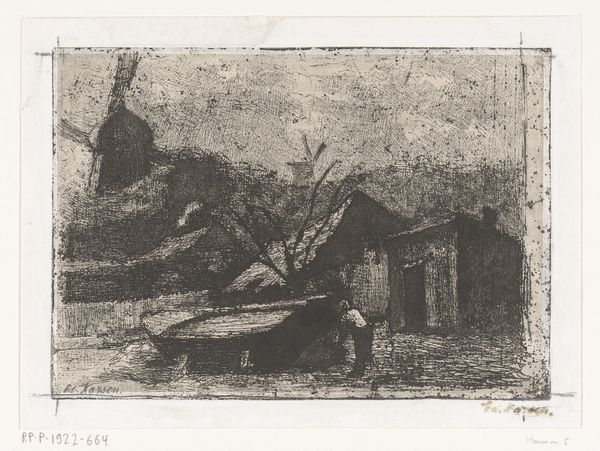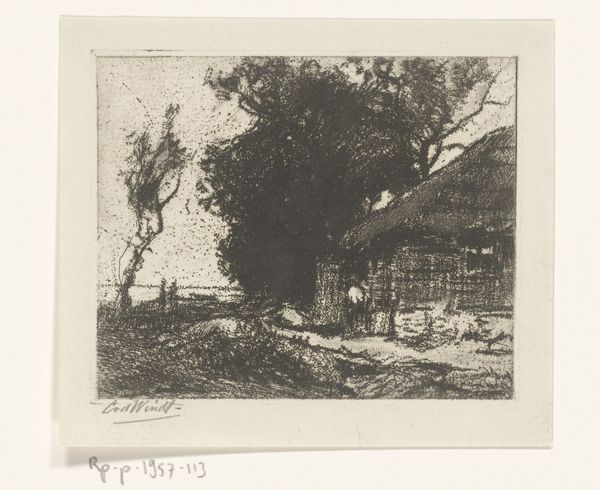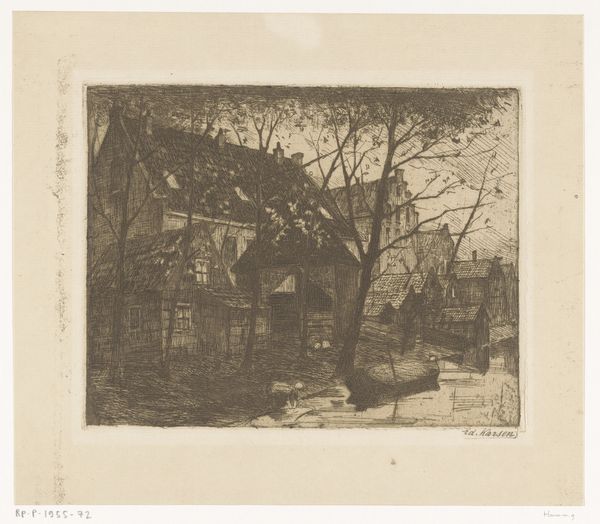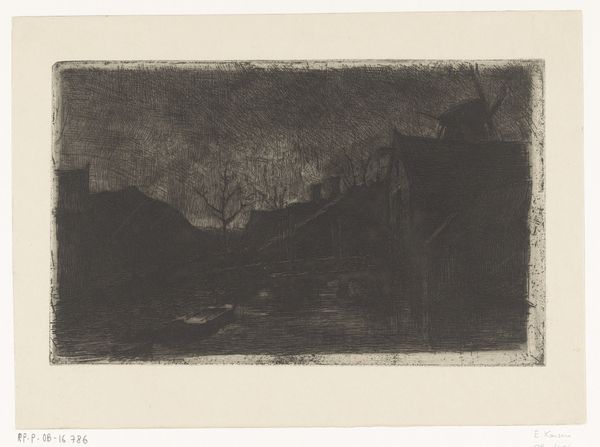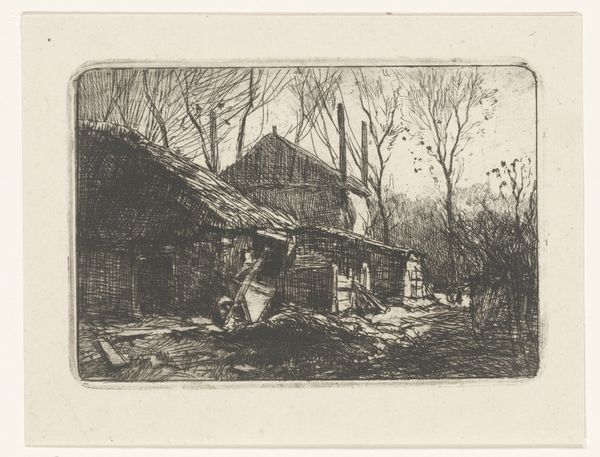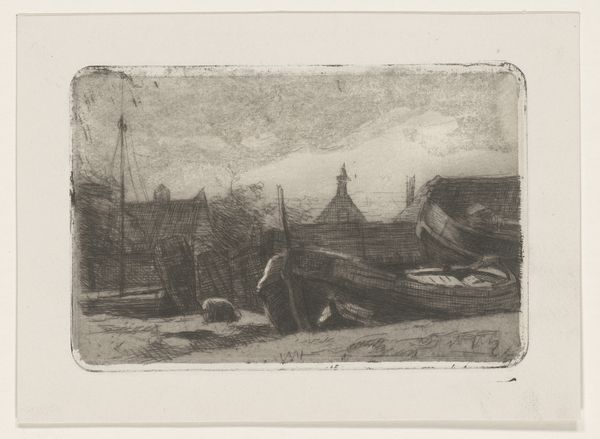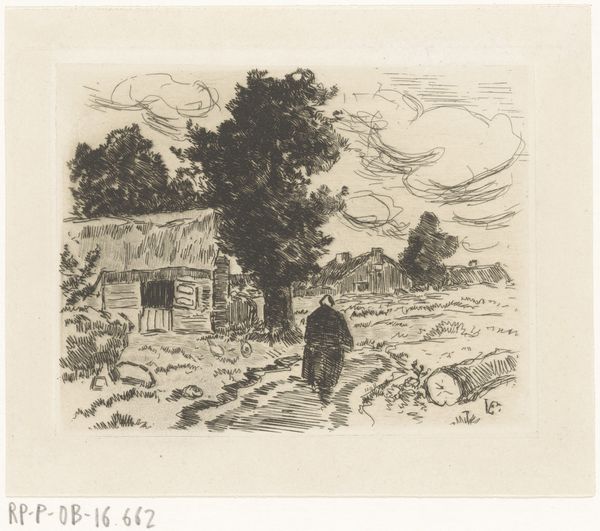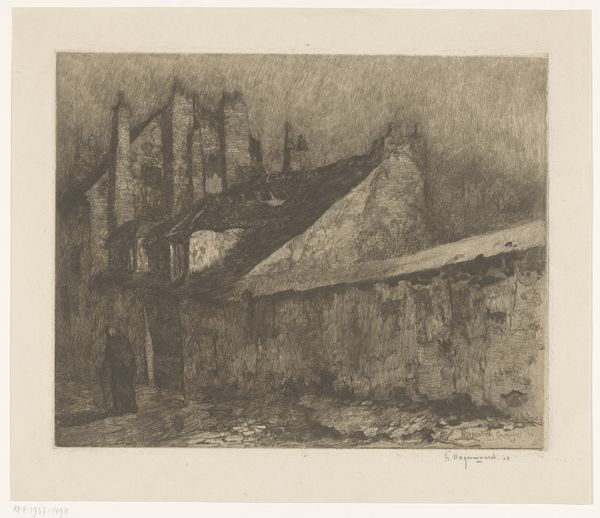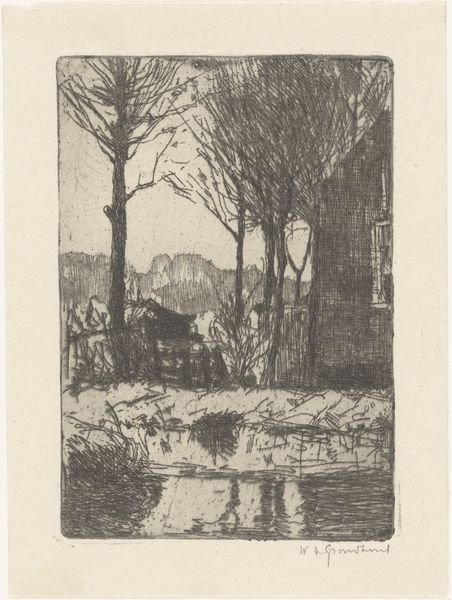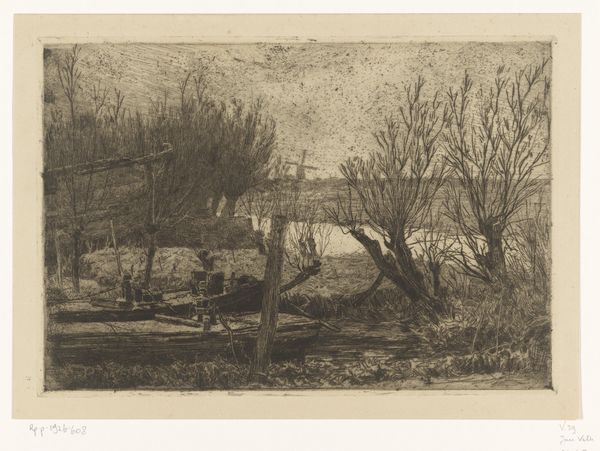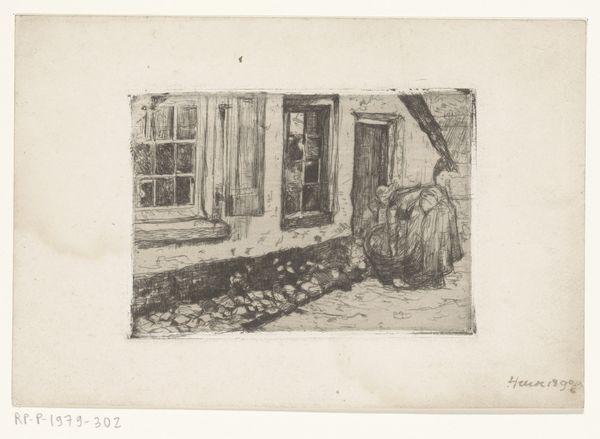
Dimensions: height 146 mm, width 207 mm
Copyright: Rijks Museum: Open Domain
Curator: This is Eduard Karsen's "Schuit op een wal," or "Boat on a Bank," created sometime between 1870 and 1941. It's an etching. Editor: There’s an immediacy to it. The way the artist worked the plate gives a real sense of the atmosphere and the quiet stillness of the scene. It feels intimate, melancholic. Curator: Well, etchings often evoke that feel due to their process. It starts with a metal plate covered in a waxy ground. The artist scratches an image into that ground, exposing the metal. It's then bathed in acid, which bites into the exposed lines. The depth of those lines depends on how long the acid works. Once printed, this labor results in its textures. Consider the conditions this image was created under; prints allowed art to circulate in new ways to reach different people and levels of class and taste. Editor: I see that so clearly here. The composition, too, directs us to contemplate themes around labor. A solitary figure, perhaps a fisherman, repairs his boat, which is the only thing standing between him and utter vulnerability. This is about social precarity. You can feel the weight of his labor, the relentless, unending necessity of it. The surrounding landscape emphasizes that isolation, too. Curator: Precisely. Karsen captured something elemental. The crosshatching and line work also subtly plays with shadow and light, indicating not just visual details, but potentially seasonal ones as well. We know that rural economies were under immense strain during this period and prints such as these offered a look into that life in both urban settings as well. Editor: Yes, it's a direct look into that, which reminds me of something from John Berger. We need to situate even these "simple" landscape scenes in the history of power relations. How were these communities impacted by capitalism, colonialism? Karsen, through his use of etching, and this seemingly innocent scene, reminds us of the everyday struggles faced by many who were systemically dispossessed and removed. Curator: This etching really encapsulates so many levels, both technical and economic. The simplicity belies the intense work and material conditions embedded within the production. Editor: Exactly, it's a poignant, evocative reminder of those entangled histories, captured in a fleeting moment, printed, preserved, and presented here before us.
Comments
No comments
Be the first to comment and join the conversation on the ultimate creative platform.
